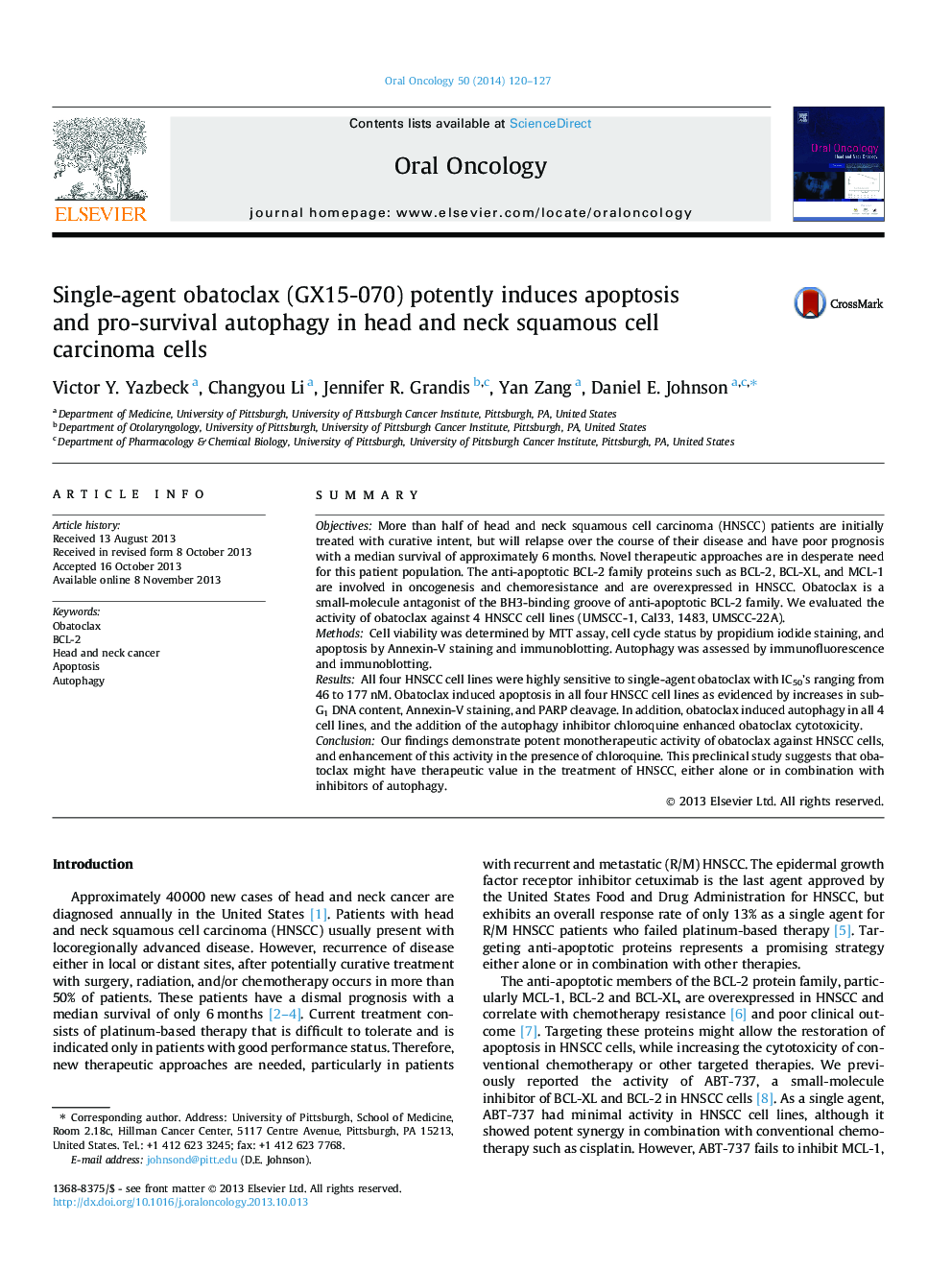| Article ID | Journal | Published Year | Pages | File Type |
|---|---|---|---|---|
| 3164361 | Oral Oncology | 2014 | 8 Pages |
SummaryObjectivesMore than half of head and neck squamous cell carcinoma (HNSCC) patients are initially treated with curative intent, but will relapse over the course of their disease and have poor prognosis with a median survival of approximately 6 months. Novel therapeutic approaches are in desperate need for this patient population. The anti-apoptotic BCL-2 family proteins such as BCL-2, BCL-XL, and MCL-1 are involved in oncogenesis and chemoresistance and are overexpressed in HNSCC. Obatoclax is a small-molecule antagonist of the BH3-binding groove of anti-apoptotic BCL-2 family. We evaluated the activity of obatoclax against 4 HNSCC cell lines (UMSCC-1, Cal33, 1483, UMSCC-22A).MethodsCell viability was determined by MTT assay, cell cycle status by propidium iodide staining, and apoptosis by Annexin-V staining and immunoblotting. Autophagy was assessed by immunofluorescence and immunoblotting.ResultsAll four HNSCC cell lines were highly sensitive to single-agent obatoclax with IC50’s ranging from 46 to 177 nM. Obatoclax induced apoptosis in all four HNSCC cell lines as evidenced by increases in sub-G1 DNA content, Annexin-V staining, and PARP cleavage. In addition, obatoclax induced autophagy in all 4 cell lines, and the addition of the autophagy inhibitor chloroquine enhanced obatoclax cytotoxicity.ConclusionOur findings demonstrate potent monotherapeutic activity of obatoclax against HNSCC cells, and enhancement of this activity in the presence of chloroquine. This preclinical study suggests that obatoclax might have therapeutic value in the treatment of HNSCC, either alone or in combination with inhibitors of autophagy.
